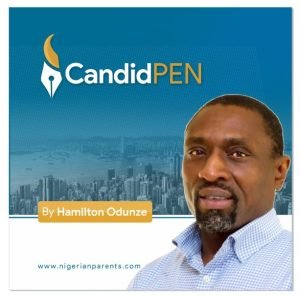Way before Nigeria became the brain drain hub of America and the rest of the west; a few other resource transfers went unnoticed and forgotten. No, I am not talking about oil and other mineral resources. Instead, I am talking about plants and vegetation. This fact dawned on me when I visited Kauai Island in Hawaii this past summer.
But before I get to my story, let me tell you about Kauai Island. The history of the Island is remarkable. Kauai is one of the Islands that make up the chain of Hawaiian Islands. It is a twelve-hour flight from the mainland United States. Over 1500 years ago, the same Polynesians who lived on the other Islands of Hawaii discovered Kauai. The people lived undisturbed by civilization for more than 500 years until the second wave of travelers came from Tahiti. It was from these new arrivals that the current Hawaiian gods, belief structure, and traditions evolved.
Then came a European trader by the name of James Cook. Cook named them the “Sandwich Island” after one of his expedition sponsors. I know you are now wondering where my story is going. But let me give you a clue, it has to do with Cook and Nigeria.
My wife and I booked an ATV ride on the second day of our stay on Kauai Island. On our way to the ride, we started seeing familiar scenery that reminded me of my village in Nigeria and my childhood. For example, roosters and hens roam the streets without care, and lizards and geckos cross the roads leisurely as if they know other road users will not run them over. As we proceeded on the journey, my wife and I agreed that the only difference between Kauai Island and my village was good roads, electricity, an overlook of the Pacific Ocean, and the surrounding mountains.
And yet, I did not suspect that the similarity was closer than I had seen to this point. Then we started seeing the trees. There were many mango trees, palm trees, coconut trees, guava and avocado pear trees, and Ube pear trees. The flowers and the grasses were the same ones I saw growing up — for example, hibiscus, calla lilies, cherries, elephant grass, and many more. So now, my curiosity got the best of me, and I began to wonder how these trees got to Kauai Island.
Still, I did not know that the highlight of my day was coming. Nothing in my line of thought led me to believe that the groove of trees in front of me was Neem trees or Dogonyaro. But, as I came closer, the putrid smell became familiar. Indeed, the grove of trees in front of me was Dogonyaro trees. Growing up, I knew this tree as the remedy for all sickness. Yet, the people on Kauai Island did not know the medicinal use of the trees around them. So, as I stood there trying to explain it to them, I got emotional and teared up.
I did not tear up because I saw the Dogonyaro tree in an unfamiliar place. Instead, I was emotional because when I went to my village with my children, I did not find any Dogonyaro trees to show my children and tell them its use. But you would tear up, too, if I told you that in 2022, the global Neem or Dogonyaro family of products will reach $2.04 billion and $4.5 billion by 2027. They include Neem oil, Neem tablets, Neem lotion, Neem supplements, and many more. Suffice it to say another of Nigeria’s natural resources has gone down the drain.
That night after I saw the Dogonyaro tree on Kauai Island, I was determined to find out how the Dogonyaro and all other trees from my village got to Kauai Island. So, the next day, I abandoned all our original plans and searched for knowledge. I went to the local library and was lucky to run into an older man with an in-depth understanding of Kauai Island.
Remember James Cook, the European who came to the Island in 1778? One of Cook’s expeditions before coming to the Island was to Nigeria, where these trees are indigenous. Because the weather is like Nigeria’s, Cook returned and brought all the trees and other things I saw on Kauai Island. Also, Cook established the coconut and sugar plantations on Kauai Island. Unfortunately, his interaction with the indigenous people was unfriendly. Cook died during an altercation with a Hawaiian Chief. This transfer of trees and animals is part of the resource drain that began long before the brain drain.


